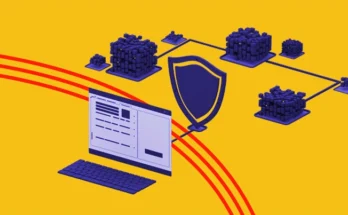Can AI prevent zero-day attacks? A Complete Guide to AI-Powered Cyber Defense
Every day, businesses, governments, and individuals face an increasing number of cyber threats. The most dangerous of these are zero-day attacks—exploits that take advantage of unknown security flaws.
Unlike traditional cyber attacks, zero-day attacks provide no warning. There are no patches, no defenses, and no prior records of vulnerability. This is where artificial intelligence (AI) changes the game.
In this comprehensive guide, we’ll explore what zero-day attacks are, why traditional tools fall short, and how AI is reshaping the way we prevent and respond to these silent threats.
Overview: Can AI prevent zero-day attacks?
A zero-day attack targets a vulnerability in software or hardware that the vendor or user does not yet know exists. Because there is no time to fix or prepare for this problem, attackers have a huge advantage. Real-life example:
In 2021, a zero-day vulnerability in Microsoft Exchange was exploited by hackers to gain unauthorized access to thousands of email servers around the world, before Microsoft could release a patch.
Why Traditional Security Tools Fail
Most traditional antivirus and firewalls rely on signature-based detection. This means they scan files and traffic for known malware signatures—unique patterns or code that match previously identified threats.
However:
- Zero-day malware has no known signature.
- It bypasses firewalls and intrusion detection systems.
- It often appears as a normal file or process until it is activated.
As a result, traditional security solutions are typically blind to zero-day threats.
Can AI stop zero-day attacks?
Yes — AI plays a powerful role in preventing, detecting, and responding to zero-day attacks.
Let’s see how AI-based cybersecurity works and why it is so effective.
How AI Prevents Zero-Day Attacks
- Behavioral risk detection
AI does not depend on known virus databases. Instead, it looks at how programs behave.
For example:
- Is it a program trying to encrypt hundreds of files at once?
- Is the process accessing system settings without permission?
- Is a file trying to download unknown code from the Internet?
If the AI detects abnormal behavior, it can:
- Quarantine the threat.
- Block the process.
- Alert security teams
This means that if the attack is brand new, the AI can block it based on behavior alone.
- Machine learning models
AI systems are trained using machine learning (ML), where they process:
- Millions of malware samples
- Valid behavior of the program
- Patterns of past cyber attacks.
Over time, ML models improve their ability to:
- Detect never-before-seen threats.
- Reduce false alarms.
- Make faster and more accurate decisions.
This is key in identifying zero-day attacks, which do not follow old patterns.
- Detection of anomaly
AI creates a profile of “normal” on your network, including:
- Daily user behavior
- System performance
- Normal traffic flow
When something unusual happens—like a device sending data to a foreign server or a sudden change in file structure—the AI flags it.
Detecting this anomaly is essential to catching latent zero-day threats.
- Cloud-based threat intelligence
Advanced AI platforms like CrowdStrike Falcon or SentinelOne are connected to the cloud. They share data globally across millions of endpoints. These AI tools help:
- Identify new attacks in an area.
- Update all others immediately.
- Learn and adapt in real time.
This global awareness ensures your business benefits from the latest intelligence in seconds.
- Automated incident response
Once a zero-day attack is detected, the AI can:
- Kill the malicious process
- Disconnect the device from the network.
- Prevent data theft.
- Start cleaning.
This automated response is faster than any human team, often stopping attacks before damage is done.
Real-world AI tools that prevent zero-day attacks.
| The platform | Key features |
| CrowdStrike Falcon | Behavioral AI, real-time detection, ransomware protection, vulnerability |
| Sentinel One Singularity | Autonomous response, rollback ransomware changes, and deep visibility |
| Microsoft Defender for Endpoint | Integrated with Windows, advanced threat analytics, and zero-day protection |
| Sophos Intercept X | Deep learning AI, exploit prevention, managed threat response |
| Trend Micro Apex One | Predictive machine learning, behavioral monitoring, and attack prevention |
These tools offer AI-powered zero-day protection and are used by companies around the world.
Limitations of Can AI prevent zero-day attacks
While AI is powerful, it’s not perfect. Some limitations include:
- False positives: Sometimes, legitimate behavior is flagged as harmful.
- Hostile AI: Hackers can try to fool AI with carefully crafted attacks.
- Initial setup: AI needs data and time to learn your environment.
However, when combined with human oversight (eg, vulnerability hunting teams), these risks can be mitigated.
Benefits of Can AI prevent zero-day attacks
| ? | Description |
| behavior | Detects and responds in real time. |
| agree | Learns from each new threat. |
| Scalability | Protects thousands of devices in networks. |
| Correctness | Analyzes behavior to reduce guesswork. |
| 24/7 protection | Works around the clock without human fatigue. |
Summary: Is AI the best defense against zero-day attacks?
Yes — AI is currently the most effective technology available to prevent and stop zero-day attacks. Its capacity:
- Analyze behavior.
- Detect anomalies.
- React in real time.
- Learn continuously.
- Scale in networks
This makes it far better than traditional security methods.
While no system can guarantee 100% security, AI gives you the best chance of detecting attacks and stopping them before they do serious damage.
Final thoughts for Can AI prevent zero-day attacks
Zero-day attacks are a growing threat, and every business, big or small, needs to be prepared. Traditional antivirus is no longer enough.
By adopting AI-powered endpoint protection platforms, companies can stay ahead of attackers, protect their data, and ensure business continuity — even in the face of unknown threats.
FAQ: Can AI prevent zero-day attacks?
1. What is a zero-day attack?
A zero-day attack exploits a previously unknown vulnerability in software or hardware before developers can release a patch. Because there are no existing defenses (“zero days” of warning), these attacks are extremely dangerous.
2. How can AI help prevent zero-day attacks?
AI enhances cybersecurity by:
- Behavioral Analysis: Detection of anomalies in system/network activity.
- Threat Prediction: Using Machine Learning to Identify Attack Patterns.
- Automated Response: Blocking suspicious activity in real-time.
- Vulnerability Scanning: Proactively finding vulnerabilities before hackers do.
3. What are the limitations of AI in preventing zero-day threats?
- False positives/negatives: AI can misclassify benign activity or miss new attacks.
- Dependence on data: Extensive, updated data sets are needed to be effective.
- Adversarial AI: Hackers can use AI to bypass defenses (eg, polymorphic malware).
4. Which AI tools are best for zero-day attack prevention?
Top solutions include:
- CrowdStrike Falcon (AI-powered endpoint detection).
- Darktrace (self-learning AI for network anomalies).
- Microsoft Defender for Endpoint (cloud-based threat intelligence).
- Palo Alto Cortex XDR (Cross-Layered AI Analysis).
5. Can AI replace human cybersecurity teams?
No — AI augments human expertise by:
- Handling repetitive tasks (log analysis, alerts).
- Providing actionable insights.
- Speeding up response times.
Human oversight is still important for strategic decisions and interpretation of AI results.
6. How do hackers use AI against zero-day defenses?
Cybercriminals take advantage of AI to:
- Automated attacks (eg, phishing campaigns).
- Avoid detection (via adversarial machine learning).
- Discover vulnerabilities faster (AI-powered penetration testing).
7. What is the future of AI in zero-day defense?
Expect developments such as:
- Self-Healing Systems: The Risks of AI Auto-Patching.
- Collaborative AI: Shared threat intelligence across platforms.
- Quantum AI: Faster risk analysis with quantum computing.


